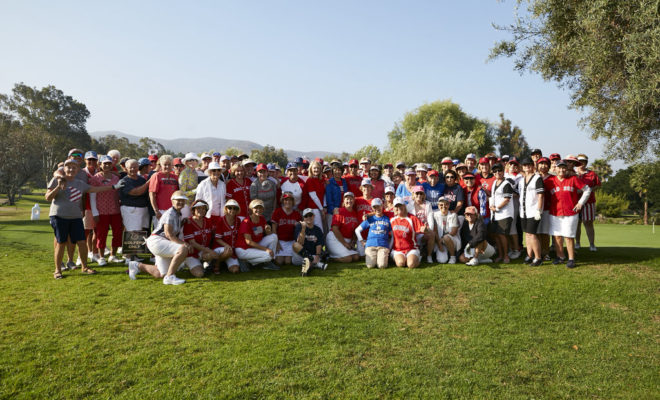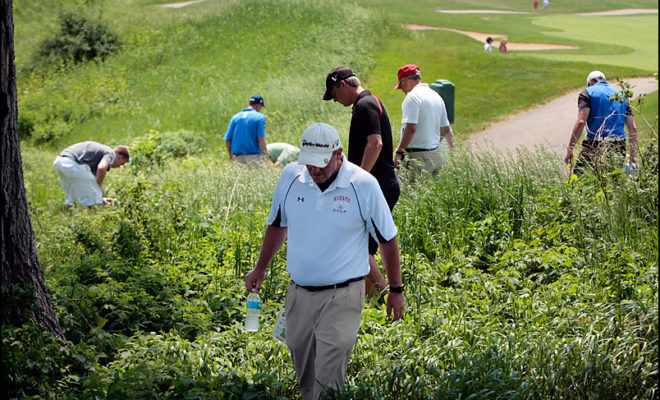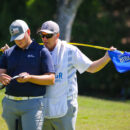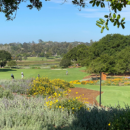100 Years of Excellence

David Stivers’ timing was just about perfect. He joined the management team at the Pebble Beach Co. the year before the 2000 U.S. Open was scheduled to be played on the iconic Monterey Peninsula masterpiece.
Preparations for the Open are years in the making, so by the time Stivers arrived, most of the heavy lifting had already been done.
“My job was to stay out of the way,” said the self-deprecating Stivers, now the president of the company. “So I got to be a spectator, getting to watch Tiger Woods all four days and his absolute domination, perhaps the best that anyone has played any championship ever. It was really something.”
Woods’ unprecedented 15-shot victory that year came in the Open’s fourth appearance at Pebble. This June, the USGA will stage its national championship at Pebble Beach for the sixth time, helping to commemorate the course’s 100th anniversary, just as Pebble had helped mark the Open’s centennial when it hosted the championship in 2000.
There will be changes to the course and resort from the last time the Open was played at Pebble, in 2010. All 454 guest rooms have been thoroughly renovated, and Fairway One, a new 38-room addition that includes two four-bedroom cottages, now sits along the first fairway.
Four greens have been restored to more accurately reflect their original design and to bring them more in line with demanding USGA specifications. The greens on Nos. 9, 13, 14 and 17 have been expanded to enable more pin positions, improve drainage and in some cases hold shots a bit better.
“What spectators will see will seem pretty much the same as in 2010,” Stivers said, “but the reaction to the changes on the course has been fantastic from amateurs and pros.”
DECADES OF CHAMPIONS
Pebble Beach didn’t join the national championship rotation until 1972, when it became the first public-access course to host an Open since the tournament began, in Newport, R.I., in 1895. But once this summer’s event is complete, it will have been the home of more U.S. Opens than any other site in the last 47 years.
The golf world has gained widespread appreciation for a layout that Jack Nicklaus considers the premier test of championship golf and his favorite course in America. His 2-over-par final-round 74 in 1972 was the best score of anyone who finished in the top 10 on a day when the scoring average stood at 78.8.
Since that first Open in ’72, Pebble Beach has been associated with some of the most dramatic shots and performances in golf history, but each historic Open moment has been accompanied by sub-plots that in themselves help show the Championship pedigree of what many golfers consider the greatest piece of golf real estate anywhere.
The ’72 Championship is best known, of course, for Nicklaus’ almost impossible 1-iron into a 30-plus-mph wind on the 219-yard 17th hole that bounced once, hit the pin and dropped a few inches from the cup. That birdie on the 71st hole ensured his third U.S. Open championship and was a shot he later said he thought he could never duplicate.
But sometimes lost in the magnificence of that 1-iron was the effective end of one of golf’s most enduring rivalries; Arnold Palmer, at 42, had a chance to move into a tie as late as the 14th hole that Sunday before fading and finishing 4 shots back. It was the last time Nicklaus and Palmer were involved in a top-of-the-leaderboard duel on Sunday in a major championship (though they finished tied for third the next year, unable to catch Johnny Miller). Also in ‘72, Lee Trevino left a hospital bed after a bout of bronchial pneumonia and arrived only two days before the tournament. Playing against his doctor’s recommendation, he finished tied for fourth.
Ten years later, it was Tom Watson’s turn to strike gold on the 17th, when his delicate chip shot from the deep, gnarly rough behind the green somehow found the cup for a birdie that gave him the outright lead on Sunday and, ultimately, his only Open title. Watson’s raised-arm sprint around the green is one of golf’s lingering championship images. Sometimes forgotten in the shadow of that sprint is the man who finished second, Nicklaus. His 69 with five consecutive birdies fell 2 shots shy of Watson.
Nicklaus’ imprint, of course, is a big part of Pebble Beach, and he oversaw a renovation of the course before the U.S. Open returned in 1992. In the final round that year, Tom Kite survived winds of up to 40 mph, when the scoring average was 77.3, and shot an even-par 72. That round included an unlikely lofted pitch shot from the rough that found the hole for a birdie on the famous 107-yard seventh hole. How stiff was the wind? Kite hit a 6-iron from the tee.
LEGENDARY VENUE
The 2000 tournament belonged to Woods, who put together what Watson called “probably the most remarkable tournament in the history of American golf,” and who would fashion perhaps the sport’s greatest season that year. He finished at 12-under par, 15 shots ahead of runners-up Ernie Els and Miguel Angel Jimenez.
The tournament had begun with an emotional farewell to Payne Stewart, who had won the previous year, but died in a plane crash the following October. In an early-morning ceremony on Wednesday of tournament week, 21 players simultaneously launched tee shots from the 18th fairway into Carmel Bay. They were followed by another group teeing off in Stewart’s memory.
In 2010, Pebble Beach showed its teeth again. Graeme McDowell of Northern Ireland became the first European to win the U.S. Open since Tony Jacklin in 1970; McDowell was the only player to shoot even par over 72 holes. It’s McDowell’s only major championship and came despite challenges from Woods, Els and Phil Mickelson, who at that time had 21 major titles among them.
Stivers has been more closely involved with preparations for this Open than he was back in 2000. He’s no less excited now than he was then.
Last summer, the U.S. Amateur was held at Pebble, and the 2023 U.S. Women’s Open and 2027 U.S. Open are also now scheduled for the course, which means Pebble is the only site ever to have four scheduled USGA national championships on the books at one time.
“Our relationship with the USGA is very special,” Stivers said. “It’s a relationship that has helped define Pebble Beach as one of the great championship venues in all of golf.” ▪











